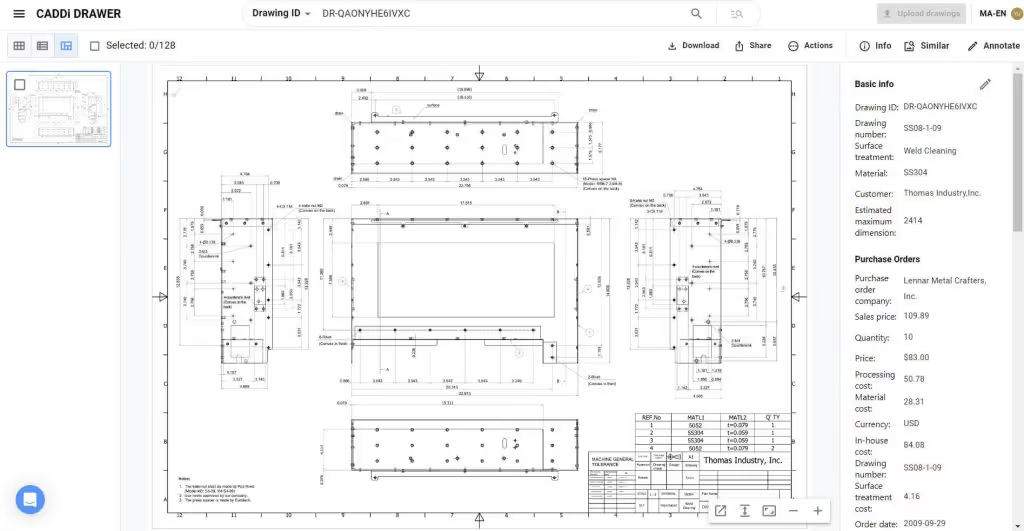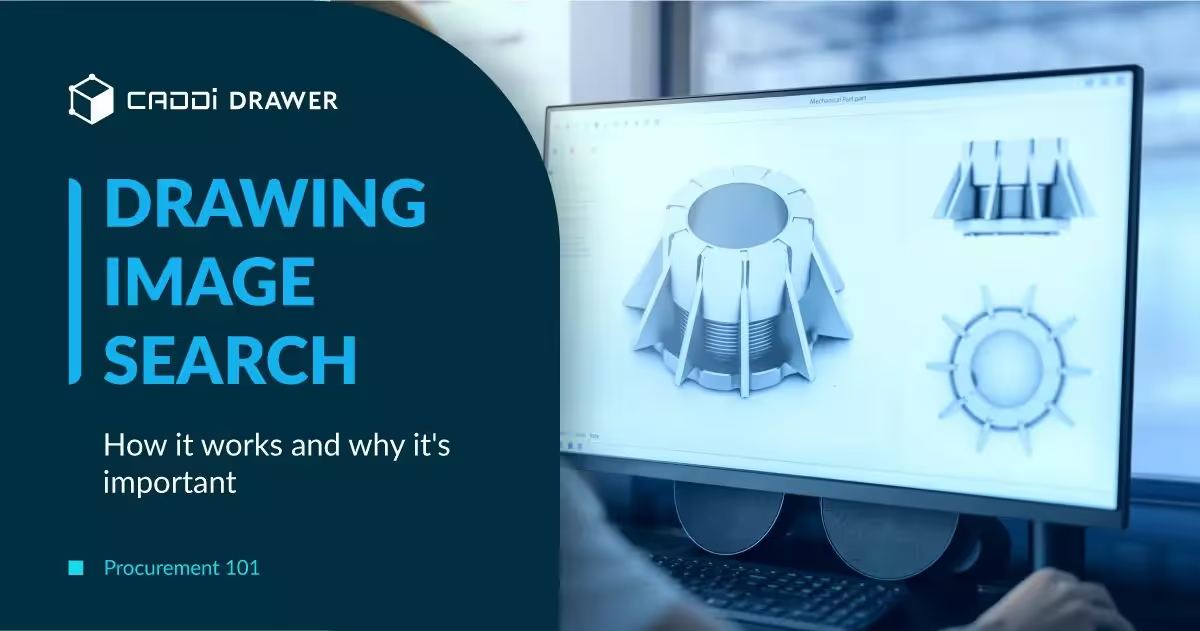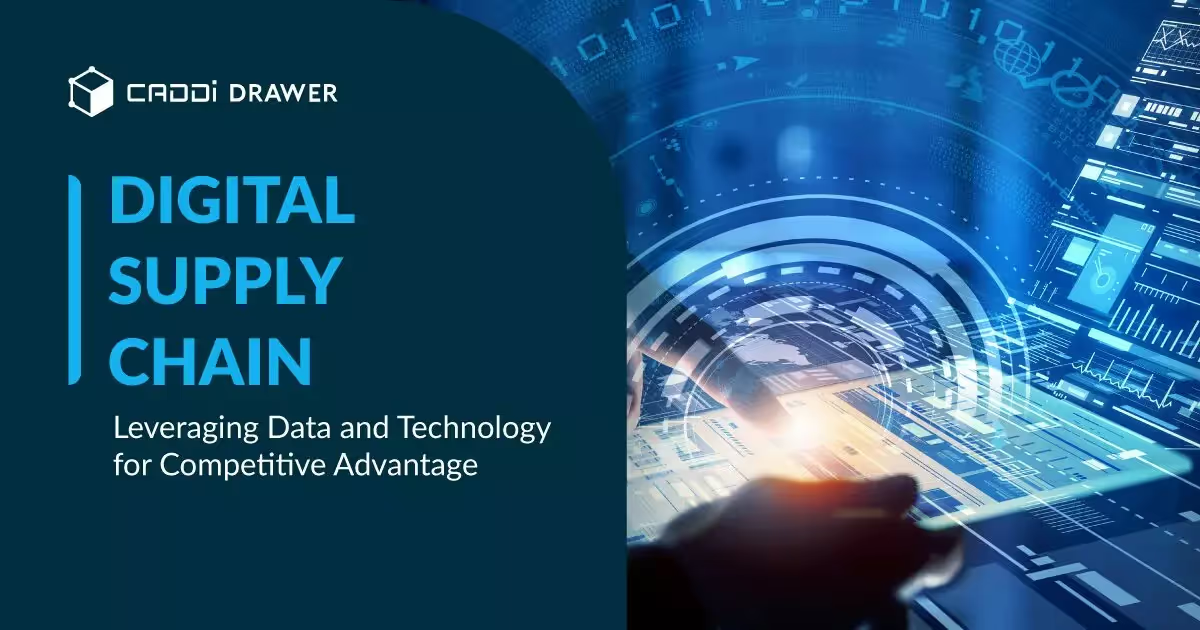Procurement 101: Strategic Sourcing – Optimizing supply chain for sustainable outcomes

Table of Contents

Strategic sourcing, as highlighted in the 2023 Global Chief Procurement Officer Survey made by Deloitte, is pivotal in augmenting enterprise value, transcending cost savings to tackle complex supply chain challenges. This vital role is reflected in procurement leaders’ focus, with 61% of CPOs identifying Strategic Sourcing/Category Management as their largest talent development investment area, followed by ESG (52%) and Data & Analytics (51%).
The shift to strategic sourcing marks a pivotal change in procurement, emphasizing the need for digital savvy and data-driven approaches. This strategy enables manufacturers to overcome global supply chain challenges, ensuring competitiveness and profitability. It’s a call to action for procurement leaders to adopt innovation for sustained success.
This guide is crafted for the visionaries at the helm of procurement departments, offering insights and actionable strategies to harness the power of strategic sourcing.
Understanding strategic sourcing
Strategic sourcing stands as a pillar of modern procurement, representing a methodical and long-term approach to acquiring parts and materials at an optimal total cost of ownership (TCO).
The beauty of strategic sourcing lies in its power to bestow sustainable competitive advantages, enabling organizations to not just cut costs but also bolster their market stance through smarter, more efficient sourcing strategies.
What is strategic sourcing?
At its essence, strategic sourcing is characterized by a deep-seated focus on cultivating symbiotic relationships with suppliers to achieve mutual benefits. It’s a philosophy that transcends the upfront purchase price, delving into the entire lifecycle of a product or service to unearth the true cost of ownership.
This includes a thorough analysis of both direct and indirect procurement costs, such as maintenance, support, and disposal expenses. Through this lens, strategic sourcing illuminates pathways to cost reduction, efficiency boosts, and value enhancements, fortifying the business against competition.
What is NOT strategic sourcing?
Strategic sourcing is not a process defined by transactional purchasing that focuses on immediate, short-term gains or the lowest bid without considering broader implications. Unlike transactional purchasing, strategic sourcing does not prioritize price above all other factors and does not operate on a purely reactive basis, addressing procurement needs as they arise without a long-term plan.
Furthermore, strategic sourcing is not characterized by a lack of collaboration and innovation with suppliers. Traditional procurement often views supplier relationships through a cost-centric lens, neglecting the potential for mutual growth, development, and value creation that strategic sourcing emphasizes. It also diverges from procurement strategies that fail to integrate technology and cross-departmental collaboration, elements that are central to strategic sourcing’s effectiveness.
{{subscribe}}
The value of strategic sourcing
Strategic sourcing brings multifaceted value across various dimensions, bolstering an organization’s operational effectiveness, cost-efficiency, and market competitiveness. Below are the principal advantages derived from implementing strategic sourcing strategies:
- Reduced total cost of ownership (TCO)
- Streamlined procurement processes
- Improved supplier performance and relationship management
- Increased visibility and control in your supply chain
- Continuous improvement and innovation
For example, Stanley Black & Decker has exemplified these strategic sourcing benefits through its global cost reduction program, achieving significant outcomes. The company realized $835 million in pre-tax run-rate savings, which is 5% of its annual revenue, in 2023, driven by the Supply Chain Transformation initiatives including strategic sourcing with enhancement of operational excellence and inventory optimization.
The Process of strategic sourcing
Implementing strategic sourcing within the manufacturing industry involves a systematic approach that can be distilled into seven crucial steps.
Internal assessment and spend analysis: Our adventure starts with an internal assessment and spend analysis. Imagine peering deep into the organization’s spending habits, unveiling areas where dollars flow freely, and pinpointing those ripe for optimization. This is where potential savings wave hello, nudging manufacturers to prioritize them for a more impactful business strategy.
Market analysis: Next, we embark on a thorough market analysis voyage. This is not just any exploration; it’s a deep dive into the supply dynamics, key players, and budding newcomers. For any manufacturer, this step is the cornerstone for spotting golden opportunities and sidestepping potential pitfalls within the supply base.
Developing sourcing policies and strategic planning: Develop clear sourcing policies and a strategic plan based on the company’s objectives and previous analyses. Set goals for cost reduction, quality enhancement, risk management, and supplier diversity, and define criteria for choosing sourcing models (e.g., single, multi, global sourcing) and plans key actions with integrating category management framework. This ensures the strategy aligns with business goals and guides the sourcing execution.
Supplier identification: Guided by insights from our market expedition, the quest to identify potential suppliers begins. This is where a manufacturer’s keen eye for detail comes into play, evaluating each contender’s capabilities, financial health, and how well they jive with the company’s ethos.
Supplier evaluation and selection: The supplier evaluation and selection phase is akin to a rigorous talent show, where only the best make the cut. This stage is all about comparing notes on cost, quality, delivery reliability, and innovation prowess, often through detailed Request for Information (RFI) and Request for Proposal (RFP) processes.
Negotiation and contract development: Then comes the art of negotiation and contract development. This is where manufacturers and suppliers sit across the table, finessing the details to hammer out contracts that promise the best bang for the buck and pave the way for long-term alliances.
Implementation and integration: With the ink dry on contracts, focus shifts to rolling out the agreements and weaving the suppliers into the company’s procurement fabric. This phase could involve everything from logistical setups to ensuring suppliers are up to speed with compliance and quality standards.
Performance monitoring and continuous improvement: The final leg involves keeping a vigilant eye on supplier performance and engaging in a perpetual dance of improvement. This relentless pursuit of excellence aims to refine the partnership and unearth even more value, keeping the manufacturer a step ahead.
Key analytical methods you can apply
The analysis process situated at the very upstream of the overall context is extremely important and involves a wide variety of efforts. Here, I would like to introduce analytical methods that are frequently used.
Analysis in spending
Price Analysis: Assessing supplier prices against historical, market, or estimated costs to ensure competitive pricing and cost-effectiveness.
Specifically, Should-Cost Analysis, which includes detailed cost models to understand the true cost of goods, can be used to identify the estimated costs.
Total Cost of Ownership (TCO): Assessing the complete costs associated with the purchase of goods, including both direct and indirect expenses over their lifecycle.
Analysis with categorization
Category Analysis: Evaluating items spent in specific categories to identify opportunities for cost savings and efficiency improvements.
One of the specific tools is a method called ABC analysis to list the annual expenditure amount for each item, showing the ratio it represents of the total expenditure, and particularly visualizing which items have a significant impact on costs. It’s also effective to identify the potential to optimize tail spend.
Supplier Segmentation Analysis: Classifying suppliers based on factors like strategic importance and risk, focusing management efforts on key suppliers for strategic partnership development. You can cross-refer this with the Category Analysis to gain more effective insights.
Analysis in suppliers
Supplier Performance Analysis: Evaluating suppliers based on criteria like quality, delivery time, and cost to improve procurement decision-making and foster strategic supplier relationships.
Contract Analysis: Examining procurement contracts for compliance, opportunities for renegotiation, and overall performance to ensure strategic alignment and cost-effectiveness.
Analysis in market and supply chain
Demand Analysis: Forecasting future procurement needs based on historical data, market trends, and business growth projections to ensure efficient resource allocation.
Risk Management Analytics: Using analytics to identify and mitigate potential risks within the supply chain, including financial, operational, and reputational risks.
Predictive Analytics for Future Spend Forecasting: Utilizing predictive models and historical data to anticipate future spending trends, enabling more strategic planning and budgeting.
Challenges in strategic sourcing
A common issue is the lack of visibility into suppliers’ operations, including their capabilities, production capacities, and financial stability. This limitation makes it difficult to assess risks and identify improvement opportunities.
Also, to advance the initiatives in strategic sourcing, it is crucial to continuously pull down data from Systems of Records, including ERPs, and to process and visualize this data using spreadsheets and business intelligence tools.
This process is indispensable but often fraught with challenges, such as consolidating data dispersed across multiple systems or incorporating information not stored in systems.
How CADDi Drawer can help analysis and data management in strategic sourcing
To address these challenges, it’s becoming increasingly crucial to implement solutions that simplify the processes of aggregating, integrating, extracting, and structuring data.
CADDi Drawer is one such solution. Using CADDi Drawer, the following analyses and data management tasks can be easily performed:
Similarity search of part drawings
The similarity search function allows for the identification of which categories should be consolidated with which suppliers, based on price information and supplier information for each part category.

Streamline activities in the procurement process
The following features enable you to streamline the time-consuming tasks of data collection and organization in procurement operations.
- Price data and supplier information can be automatically linked to each drawing and can also be exported together.
- By using keyword searches combined with similarity searches, the time spent searching for drawings and data in procurement tasks can be reduced.

Manufacturers of industrial machinery and equipment, such as Kawasaki Railcar Manufacturing and Ebara Corporation, are actually utilizing these features of CADDi Drawer to successfully drive strategic sourcing, giving rise to Best Practices.
- Kawasaki Railcar Manufacturing: Unlocking the Potential of Hidden Drawings and Purchasing Data: Achieving Unexpected Cost Reductions
- Ebara Corporation: From “Drawing Management” to “Drawing Utilization”: Leveraging Buried Data for Optimal Procurement
Strategic sourcing, as highlighted in the 2023 Global Chief Procurement Officer Survey made by Deloitte, is pivotal in augmenting enterprise value, transcending cost savings to tackle complex supply chain challenges. This vital role is reflected in procurement leaders’ focus, with 61% of CPOs identifying Strategic Sourcing/Category Management as their largest talent development investment area, followed by ESG (52%) and Data & Analytics (51%).
The shift to strategic sourcing marks a pivotal change in procurement, emphasizing the need for digital savvy and data-driven approaches. This strategy enables manufacturers to overcome global supply chain challenges, ensuring competitiveness and profitability. It’s a call to action for procurement leaders to adopt innovation for sustained success.
This guide is crafted for the visionaries at the helm of procurement departments, offering insights and actionable strategies to harness the power of strategic sourcing.
Understanding strategic sourcing
Strategic sourcing stands as a pillar of modern procurement, representing a methodical and long-term approach to acquiring parts and materials at an optimal total cost of ownership (TCO).
The beauty of strategic sourcing lies in its power to bestow sustainable competitive advantages, enabling organizations to not just cut costs but also bolster their market stance through smarter, more efficient sourcing strategies.
What is strategic sourcing?
At its essence, strategic sourcing is characterized by a deep-seated focus on cultivating symbiotic relationships with suppliers to achieve mutual benefits. It’s a philosophy that transcends the upfront purchase price, delving into the entire lifecycle of a product or service to unearth the true cost of ownership.
This includes a thorough analysis of both direct and indirect procurement costs, such as maintenance, support, and disposal expenses. Through this lens, strategic sourcing illuminates pathways to cost reduction, efficiency boosts, and value enhancements, fortifying the business against competition.
What is NOT strategic sourcing?
Strategic sourcing is not a process defined by transactional purchasing that focuses on immediate, short-term gains or the lowest bid without considering broader implications. Unlike transactional purchasing, strategic sourcing does not prioritize price above all other factors and does not operate on a purely reactive basis, addressing procurement needs as they arise without a long-term plan.
Furthermore, strategic sourcing is not characterized by a lack of collaboration and innovation with suppliers. Traditional procurement often views supplier relationships through a cost-centric lens, neglecting the potential for mutual growth, development, and value creation that strategic sourcing emphasizes. It also diverges from procurement strategies that fail to integrate technology and cross-departmental collaboration, elements that are central to strategic sourcing’s effectiveness.
{{subscribe}}
The value of strategic sourcing
Strategic sourcing brings multifaceted value across various dimensions, bolstering an organization’s operational effectiveness, cost-efficiency, and market competitiveness. Below are the principal advantages derived from implementing strategic sourcing strategies:
- Reduced total cost of ownership (TCO)
- Streamlined procurement processes
- Improved supplier performance and relationship management
- Increased visibility and control in your supply chain
- Continuous improvement and innovation
For example, Stanley Black & Decker has exemplified these strategic sourcing benefits through its global cost reduction program, achieving significant outcomes. The company realized $835 million in pre-tax run-rate savings, which is 5% of its annual revenue, in 2023, driven by the Supply Chain Transformation initiatives including strategic sourcing with enhancement of operational excellence and inventory optimization.
The Process of strategic sourcing
Implementing strategic sourcing within the manufacturing industry involves a systematic approach that can be distilled into seven crucial steps.
Internal assessment and spend analysis: Our adventure starts with an internal assessment and spend analysis. Imagine peering deep into the organization’s spending habits, unveiling areas where dollars flow freely, and pinpointing those ripe for optimization. This is where potential savings wave hello, nudging manufacturers to prioritize them for a more impactful business strategy.
Market analysis: Next, we embark on a thorough market analysis voyage. This is not just any exploration; it’s a deep dive into the supply dynamics, key players, and budding newcomers. For any manufacturer, this step is the cornerstone for spotting golden opportunities and sidestepping potential pitfalls within the supply base.
Developing sourcing policies and strategic planning: Develop clear sourcing policies and a strategic plan based on the company’s objectives and previous analyses. Set goals for cost reduction, quality enhancement, risk management, and supplier diversity, and define criteria for choosing sourcing models (e.g., single, multi, global sourcing) and plans key actions with integrating category management framework. This ensures the strategy aligns with business goals and guides the sourcing execution.
Supplier identification: Guided by insights from our market expedition, the quest to identify potential suppliers begins. This is where a manufacturer’s keen eye for detail comes into play, evaluating each contender’s capabilities, financial health, and how well they jive with the company’s ethos.
Supplier evaluation and selection: The supplier evaluation and selection phase is akin to a rigorous talent show, where only the best make the cut. This stage is all about comparing notes on cost, quality, delivery reliability, and innovation prowess, often through detailed Request for Information (RFI) and Request for Proposal (RFP) processes.
Negotiation and contract development: Then comes the art of negotiation and contract development. This is where manufacturers and suppliers sit across the table, finessing the details to hammer out contracts that promise the best bang for the buck and pave the way for long-term alliances.
Implementation and integration: With the ink dry on contracts, focus shifts to rolling out the agreements and weaving the suppliers into the company’s procurement fabric. This phase could involve everything from logistical setups to ensuring suppliers are up to speed with compliance and quality standards.
Performance monitoring and continuous improvement: The final leg involves keeping a vigilant eye on supplier performance and engaging in a perpetual dance of improvement. This relentless pursuit of excellence aims to refine the partnership and unearth even more value, keeping the manufacturer a step ahead.
Key analytical methods you can apply
The analysis process situated at the very upstream of the overall context is extremely important and involves a wide variety of efforts. Here, I would like to introduce analytical methods that are frequently used.
Analysis in spending
Price Analysis: Assessing supplier prices against historical, market, or estimated costs to ensure competitive pricing and cost-effectiveness.
Specifically, Should-Cost Analysis, which includes detailed cost models to understand the true cost of goods, can be used to identify the estimated costs.
Total Cost of Ownership (TCO): Assessing the complete costs associated with the purchase of goods, including both direct and indirect expenses over their lifecycle.
Analysis with categorization
Category Analysis: Evaluating items spent in specific categories to identify opportunities for cost savings and efficiency improvements.
One of the specific tools is a method called ABC analysis to list the annual expenditure amount for each item, showing the ratio it represents of the total expenditure, and particularly visualizing which items have a significant impact on costs. It’s also effective to identify the potential to optimize tail spend.
Supplier Segmentation Analysis: Classifying suppliers based on factors like strategic importance and risk, focusing management efforts on key suppliers for strategic partnership development. You can cross-refer this with the Category Analysis to gain more effective insights.
Analysis in suppliers
Supplier Performance Analysis: Evaluating suppliers based on criteria like quality, delivery time, and cost to improve procurement decision-making and foster strategic supplier relationships.
Contract Analysis: Examining procurement contracts for compliance, opportunities for renegotiation, and overall performance to ensure strategic alignment and cost-effectiveness.
Analysis in market and supply chain
Demand Analysis: Forecasting future procurement needs based on historical data, market trends, and business growth projections to ensure efficient resource allocation.
Risk Management Analytics: Using analytics to identify and mitigate potential risks within the supply chain, including financial, operational, and reputational risks.
Predictive Analytics for Future Spend Forecasting: Utilizing predictive models and historical data to anticipate future spending trends, enabling more strategic planning and budgeting.
Challenges in strategic sourcing
A common issue is the lack of visibility into suppliers’ operations, including their capabilities, production capacities, and financial stability. This limitation makes it difficult to assess risks and identify improvement opportunities.
Also, to advance the initiatives in strategic sourcing, it is crucial to continuously pull down data from Systems of Records, including ERPs, and to process and visualize this data using spreadsheets and business intelligence tools.
This process is indispensable but often fraught with challenges, such as consolidating data dispersed across multiple systems or incorporating information not stored in systems.
How CADDi Drawer can help analysis and data management in strategic sourcing
To address these challenges, it’s becoming increasingly crucial to implement solutions that simplify the processes of aggregating, integrating, extracting, and structuring data.
CADDi Drawer is one such solution. Using CADDi Drawer, the following analyses and data management tasks can be easily performed:
Similarity search of part drawings
The similarity search function allows for the identification of which categories should be consolidated with which suppliers, based on price information and supplier information for each part category.

Streamline activities in the procurement process
The following features enable you to streamline the time-consuming tasks of data collection and organization in procurement operations.
- Price data and supplier information can be automatically linked to each drawing and can also be exported together.
- By using keyword searches combined with similarity searches, the time spent searching for drawings and data in procurement tasks can be reduced.

Manufacturers of industrial machinery and equipment, such as Kawasaki Railcar Manufacturing and Ebara Corporation, are actually utilizing these features of CADDi Drawer to successfully drive strategic sourcing, giving rise to Best Practices.
- Kawasaki Railcar Manufacturing: Unlocking the Potential of Hidden Drawings and Purchasing Data: Achieving Unexpected Cost Reductions
- Ebara Corporation: From “Drawing Management” to “Drawing Utilization”: Leveraging Buried Data for Optimal Procurement
Ready to see CADDi Drawer in action? Get a personalized demo.
Subscribe to our Blog!
Related Resources












.svg)



.svg)
.svg)
.svg)


